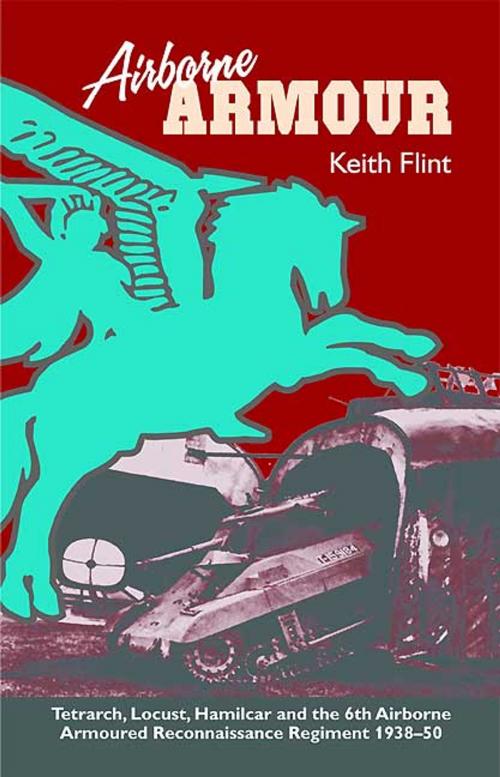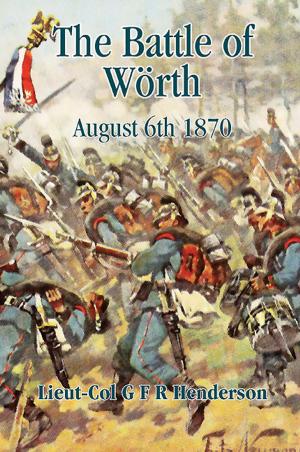Airborne Armour
Tetrarch, Locust, Hamilcar and the 6th Airborne Armoured Reconnaissance Regiment 1938-50
Nonfiction, History, Military, Other, World War II| Author: | Keith Flint | ISBN: | 9781908916051 |
| Publisher: | Helion and Company | Publication: | December 19, 2004 |
| Imprint: | Helion and Company | Language: | English |
| Author: | Keith Flint |
| ISBN: | 9781908916051 |
| Publisher: | Helion and Company |
| Publication: | December 19, 2004 |
| Imprint: | Helion and Company |
| Language: | English |
Despite all the works on airborne forces published since 1945, the full story of Britain's 'airborne armour' has remained untold. This book is intended to correct that omission. The story has two main strands - the project to fly tanks onto the battlefield to support airborne forces, and the history of the unit which operated those tanks and supported 6th Airborne Division in the ground role - the 6th Airborne Armoured Reconnaissance Regiment. The book is the result of considerable original research and contact with surviving members of 6th AARR. It contains the full development background of both airborne tanks, the British Tetrarch and American Locust, and also that of the Hamilcar glider. It examines rival or complimentary projects, in particular the German Me 321 Gigant glider, and analyses the extent to which the British airborne armour project was a success. The history of 6th AARR is traced back to the little known Special Service Squadrons of the RAC which were pioneers of armoured amphibious assault, and who saw action in the invasion of Madagascar in 1942. One of these squadrons became the Airborne Light Tank Squadron, which grew into the Airborne Armoured Reconnaissance Regiment in time for D-Day. This unit flew 20 Tetrarch tanks into battle on the evening of D-Day in the first ever assault landing of tanks from the air, and did the same 10 months later when 8 Locust tanks were landed as part of the massive Rhine crossing operation. 6th AARR also had a proud history in ground combat in Normandy, the Ardennes, and Germany, often forming the spearhead for the advance of 6th Airborne Division. The unit has a fair claim to be the 'forgotten regiment' of British airborne forces, a fate which this book aims to put right. Airborne Armour describes and analyses a unique unit of the British army and some unique military operations.
Despite all the works on airborne forces published since 1945, the full story of Britain's 'airborne armour' has remained untold. This book is intended to correct that omission. The story has two main strands - the project to fly tanks onto the battlefield to support airborne forces, and the history of the unit which operated those tanks and supported 6th Airborne Division in the ground role - the 6th Airborne Armoured Reconnaissance Regiment. The book is the result of considerable original research and contact with surviving members of 6th AARR. It contains the full development background of both airborne tanks, the British Tetrarch and American Locust, and also that of the Hamilcar glider. It examines rival or complimentary projects, in particular the German Me 321 Gigant glider, and analyses the extent to which the British airborne armour project was a success. The history of 6th AARR is traced back to the little known Special Service Squadrons of the RAC which were pioneers of armoured amphibious assault, and who saw action in the invasion of Madagascar in 1942. One of these squadrons became the Airborne Light Tank Squadron, which grew into the Airborne Armoured Reconnaissance Regiment in time for D-Day. This unit flew 20 Tetrarch tanks into battle on the evening of D-Day in the first ever assault landing of tanks from the air, and did the same 10 months later when 8 Locust tanks were landed as part of the massive Rhine crossing operation. 6th AARR also had a proud history in ground combat in Normandy, the Ardennes, and Germany, often forming the spearhead for the advance of 6th Airborne Division. The unit has a fair claim to be the 'forgotten regiment' of British airborne forces, a fate which this book aims to put right. Airborne Armour describes and analyses a unique unit of the British army and some unique military operations.















